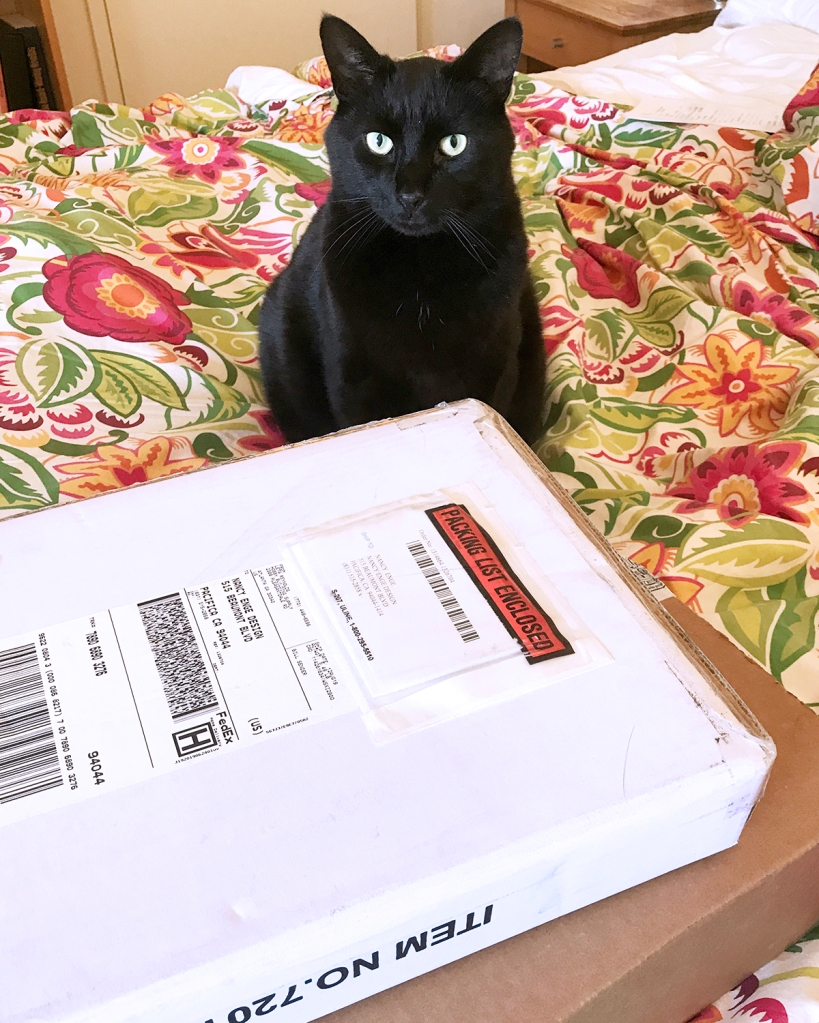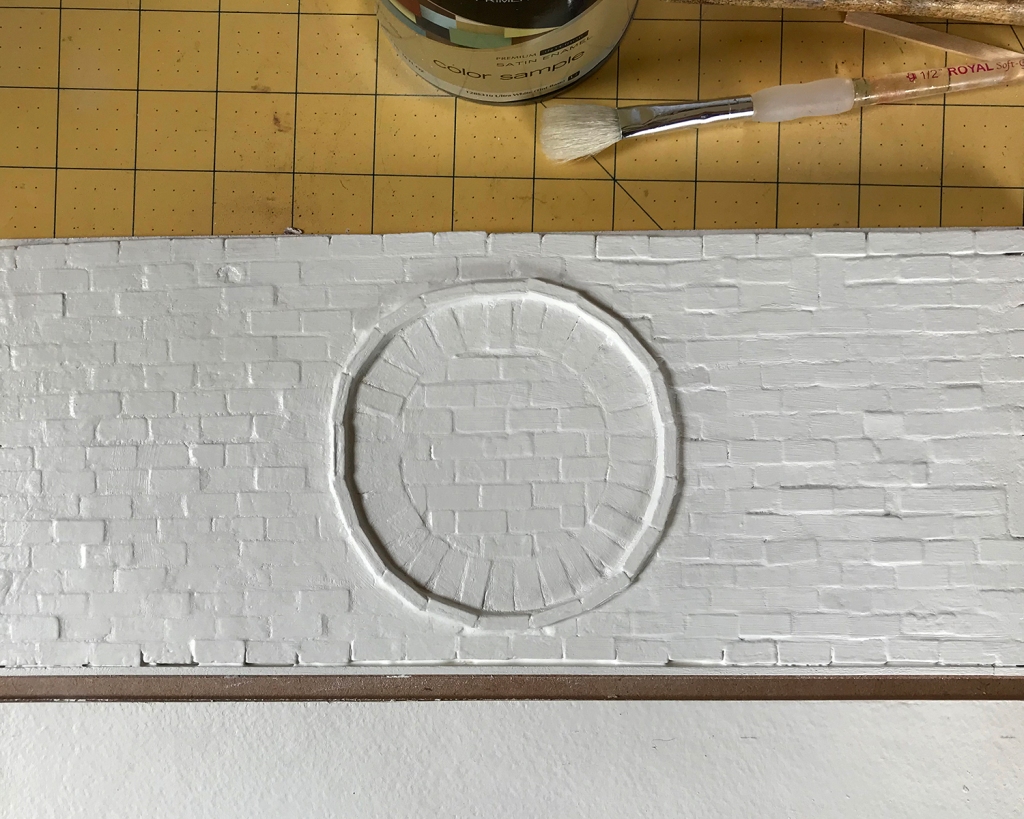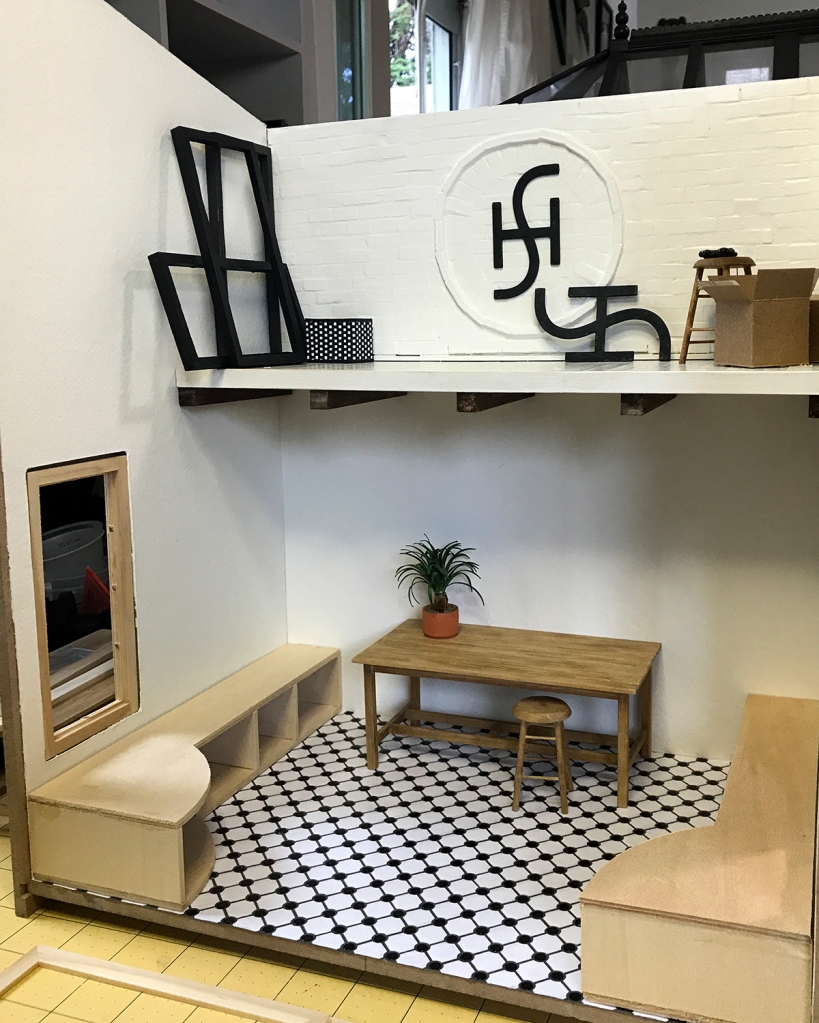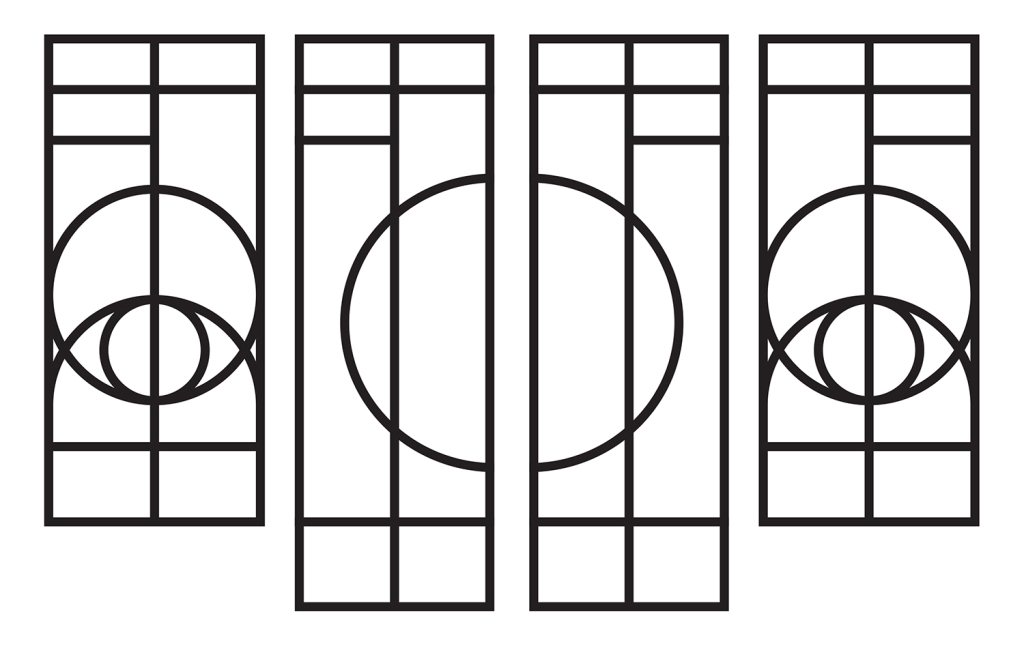
I thought it might be interesting to review building highlights of the Sea House Leadlights studio office, from start through submission. (Can’t really say “completion” because things never stay done ‘round here.) There are links back to original posts — if any were made — with more details. I wasn’t very bloggy :)

I spend a lot of pages thinking, sketching, dreaming, considering and working out dimensions and story.

The first floor idea, though fun to design, paint and assemble, did not work well in the space. So it goes.

Height was added to the starter kit with parts from a second. I like to retain recognizable elements of the kit, so the roof angle and footprint, as well as door and lower window placement remained unchanged.

I glued cold press 140 lb. watercolor paper to the walls for texture before painting, and added a whitewashed aged brick back wall in the loft.


I opted to make the front façade removable as well as the roof… this makes it so much easier to photograph the interior.

I cut the built-in benches from 1/16-inch basswood on the Cricut Maker. These were glued together and supported with 1/8-inch dividers.


I thought and sketched about the window designs for some time. The Pavilion is bubble-themed; the Conservatory celestial… for the Leadlights design studio I went Egyptian Deco. Mostly sort of.


The upper window is a stylized scarab. Very.
The “leading” designs for the windows are cut from lead black cardstock, glued front and back to the plexi, then framed in black on the exterior (and tree frog on the interior). I like to see wood grain, so I use a 1:1 ratio of acrylic paint and staining medium.

If one looks straight on, the window frames the bricked loft wall and the old Sea House logo. With sacred scarab wings.

I — or rather the Cricut Maker — cut the signage from matte black vinyl. The stars in the design are meant to resemble anchor plates used to reinforce old buildings. I love them.
In this backlit photo, the vinyl letters appear to float off the side of the building. It’s not quite so unnatural-looking in person, but knocking back the synthetic smoothness is on my eternal learn-to-do list, to find ways to tone down the material. (Transferring wee letters and figures is a fiddly, fussy business, especially onto an uneven surface, and I am not eager.)


Here’s a roof’s-eye look at the progressing build. The holes are drilled for the LED light fixtures that will illuminate the work space below. (The wiring to be concealed beneath a custom rug and other stuff stored in the loft.) A narrow shelf beneath the scarab window on the removable front might support batteries if I ever add lighting to the front. Floor tiles gleam softly with scuff-resistant utility. Leather window seats beckon.
To be continued…

I love this build and it’s wonderful to see some of how you went from the basic kit to the final product. I’m constantly amazed by your ability to take what’s in your minds eye and make it reality.
Well thank you, Sheila! I’m so gratified that this build resonates with you. I do a *lot* of staring and studying; as mostly I make things up as I go along. There’s this observation from Buckminster Fuller that really rings true: “When I am working on a problem, I never think about beauty. I only think about how to solve the problem. But if the solution is not beautiful, I know it’s wrong.”
I am happy to see that in spite of not blogging during the process, you at least took photos to share with us now! It’s fun to see the process and how you harnessed the power of the Cricut to achieve so many incredible design elements!
Jodi, thank you! The Cricut Maker (as you well know) is definitely an indispensable tool in enabling my visions. And I always try to document my projects; it’s just that sometimes I undergo bouts of social media ennui and prefer to use my available energy for making :)
It’s been fun watching the progression of your Sea house. I get a kick seeing your creativity and how you put different pieces together from scratch. You do things I would never think of and at the same time it gives me ideas.
Thanks, Bennie! For me, that’s the whole point of sharing and reading about other makers’ processes: I never know when an idea may be sparked! I’m so tickled (in a good way) you feel the same.
Glad you are blogging again :)
Wait, what, are you trying to jinx me?
<3
ah, you are back with blogging! great. and your work: as always – spendid!
Hello Marion, and thank you! It means a lot that you see my work as splendid.
<3
Do you glue on the watercolor paper and then paint it as though it were wood? I wanted to do that to get a plaster look on MDF, but I let someone on a forum talk me out of it — maybe she was right, but maybe we were both right….
Jeanne, happy greetings! Yes, the watercolor paper is tacky-glued (applied in a thin, even layer with a medium brush) on the flat walls before building, keeping the pre-marked wall joins free. They’re then weighted with cardboard and books to dry thoroughly overnight.